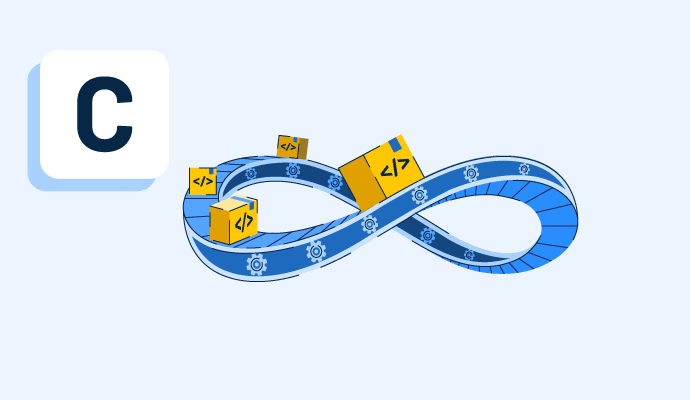
Continuous integration (CI) is a DevOps software technique developers use to routinely merge their code changes into a central repository, followed by the execution of automated builds and tests. In a word, CI is the build or integration stage of the software release process.
CI includes both an automation component and a cultural component. Continuous integration's main objectives are to find and fix bugs more quickly, enhance software quality, and shorten the time it takes to validate and publish new software updates. Many organizations use continuous integration tools to build, package, and test their software continuously.
Previously, developers on a team might spend a lot of time working alone and only merge their modifications to the master branch once completed. This resulted in bugs building up for a long time without being fixed, making merging code changes challenging and drawn/out. These issues make it more challenging to provide customers with updates quickly.
Continuous integration is typically implemented using tools and technologies like version control systems. By automating the build and testing process, CI guarantees that code changes are thoroughly tested and integrated smoothly into the main codebase, improving the quality and speed of software development.
Below is a step-by-step overview of the CI process.
Organizations are eager to adopt continuous integration for their development projects. Enhancing the effectiveness and caliber of software development processes is just one way CI supports the companies that use it. Below are more of the advantages continuous integration provides to its users.
Several features of CI enable developers to automate the build and testing process and ensure that code changes are integrated smoothly into the main codebase. Some of these features include:
It's common to confuse continuous integration with continuous delivery, but the two are very different.

Continuous integration is a software development practice in which developers integrate their code changes into a shared repository, typically several times a day. Each integration is verified by automated build processes and tests that help to address any issues early in the development cycle.
CI aims to improve the quality of software development by catching errors and bugs as early in the process as usual and to make the development protocol more efficient by automating repetitive tasks. By continuously integrating code changes into the main codebase, developers can ensure that the code is always in a buildable and testable state and that all changes are documented.
Continuous delivery (CD) automates the delivery of applications to particular infrastructure environments and continues where continuous integration leaves off. Updates, bug fixes, and even new features verified as part of the code base are delivered to users quickly and safely through CD. It ensures that pushing code changes to various environments is automated.
Learn more about how to prevent technical debts in the software development lifecycle.
Sagar Joshi is a former content marketing specialist at G2 in India. He is an engineer with a keen interest in data analytics and cybersecurity. He writes about topics related to them. You can find him reading books, learning a new language, or playing pool in his free time.
What is IPaaS? Integration platform as a service (IPaaS) is a cloud-friendly solution that...
 by Sagar Joshi
by Sagar Joshi
What is application lifecycle management? Application lifecycle management (ALM) is an...
 by Sagar Joshi
by Sagar Joshi
What is data integration? Data integration merges data from various source systems to form a...
 by Sagar Joshi
by Sagar Joshi
What is IPaaS? Integration platform as a service (IPaaS) is a cloud-friendly solution that...
 by Sagar Joshi
by Sagar Joshi
What is application lifecycle management? Application lifecycle management (ALM) is an...
 by Sagar Joshi
by Sagar Joshi


